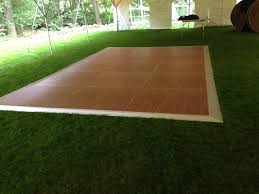Enhancing Ingenuity With Color Concept in Light Emitting Diode Movement Floor Layouts
Enhancing Ingenuity With Color Concept in Light Emitting Diode Movement Floor Layouts
Blog Article
Color theory represents an crucial element of design, especially as it comes to designing light-emitting diode dancing floors. The interplay of hues can greatly affect the mood and vibe of a venue. By grasping how hues function together, creators can craft an ambiance that improves the overall experience for dancers. This piece examines the fundamentals of hue principles and its application in LED dance floor layouts.
The primary colors are red, blue, and yellow. These colors cannot be made by blending different hues combined. Intermediate hues, such as green, orange, and purple, are formed by combining main colors. Third-level hues are formed by mixing a primary color with a intermediate hue. Grasping these fundamental connections helps designers choose colors that enhance one another and produce a aesthetically appealing display. Combining these colors on an LED dance floor can lead to dynamic and stimulating outcomes that attract the focus of participants.
Hue value also holds a crucial role in aesthetics. Colors can be categorized as warm or chill. Hot hues, such as crimson, orange, and yellow, tend to evoke feelings of excitement and warmth. In contrast, cool hues like azure, emerald, and violet often create a serene and tranquil atmosphere. Designers can use these color temperatures to establish the ambiance for various types of browse around here events. For instance, a celebration environment may gain from warm colors that energize the audience, while a further calm event might use cool colors to provide a calming influence.
In furthermore to hue pairings and temperature, brightness and intensity are essential factors to consider. Brightness refers to how bright or dim a color appears, while saturation indicates the vividness of a color. Bright, saturated colors can generate a lively and lively environment, ideal for dancing surfaces. On the contrary hand, gentler, less saturated hues can generate a more subdued environment. Through adjusting brightness and saturation, creators can draw attention to specific areas of the dancing surface or create visual routes, guiding dancers through the venue.
Ultimately, it is essential to consider the emotional effects of color in light-emitting diode dancing floor designs. Various colors can evoke different feelings and responses. For example, crimson is frequently associated with passion and energy, while blue can be soothing and tranquil. Understanding these associations enables creators to strategically use hues to look here influence the actions of dancers. By integrating hue theory into LED dancing surface designs, creators can enhance the total experience, rendering it unforgettable and enjoyable for everyone participating.